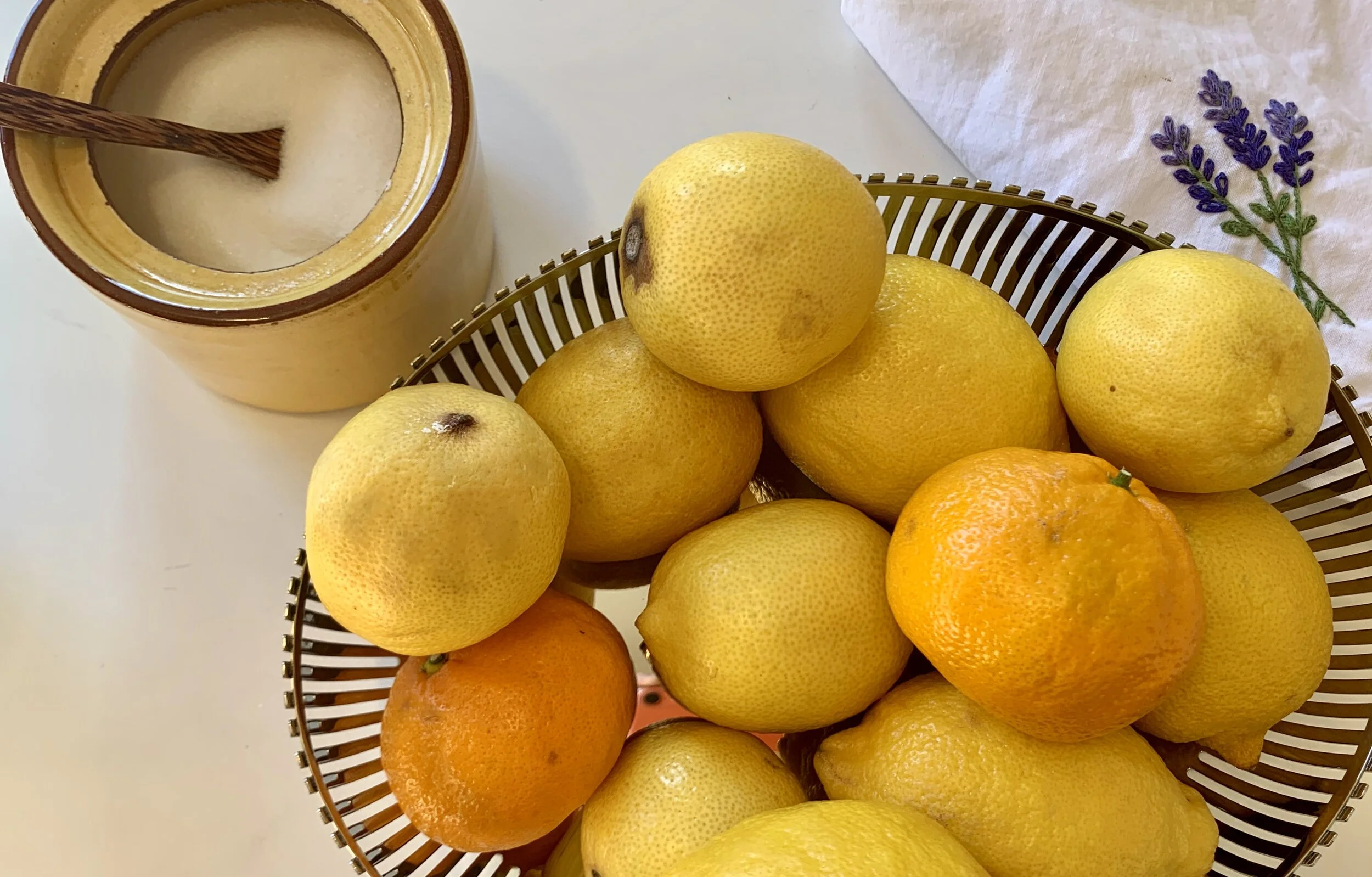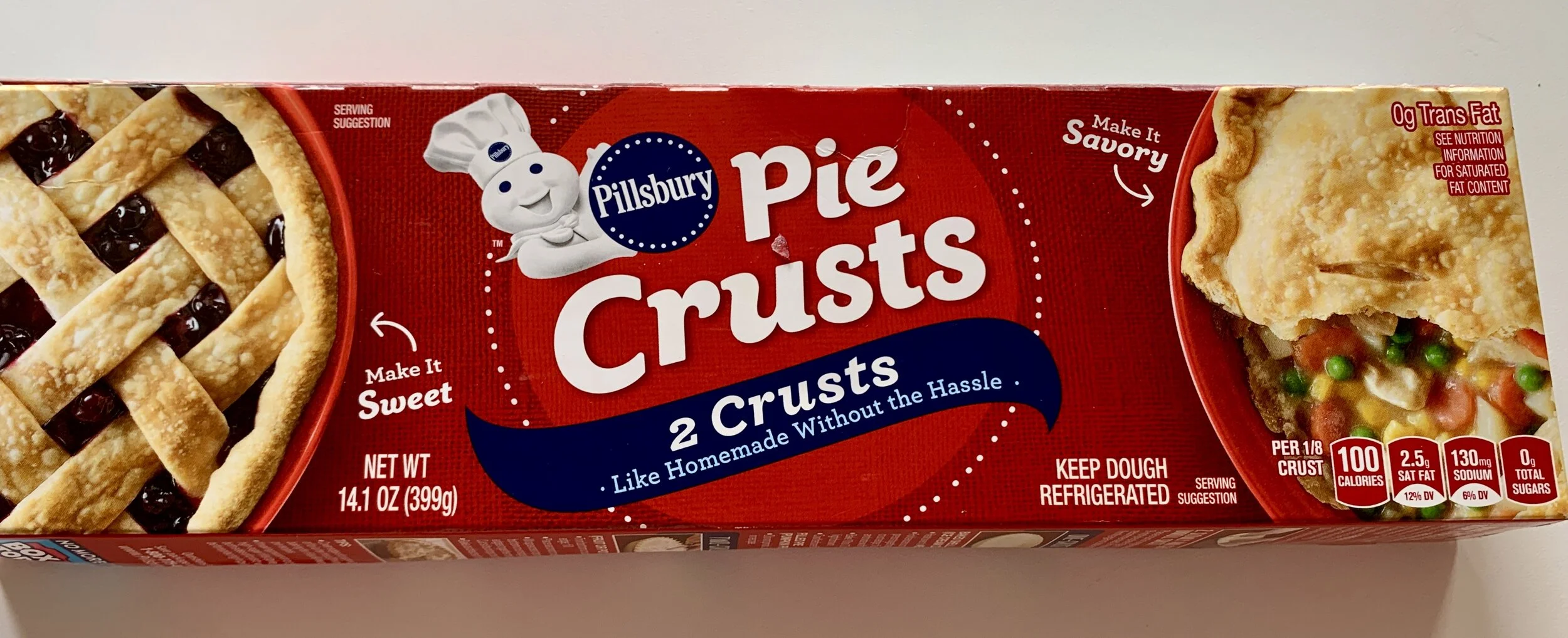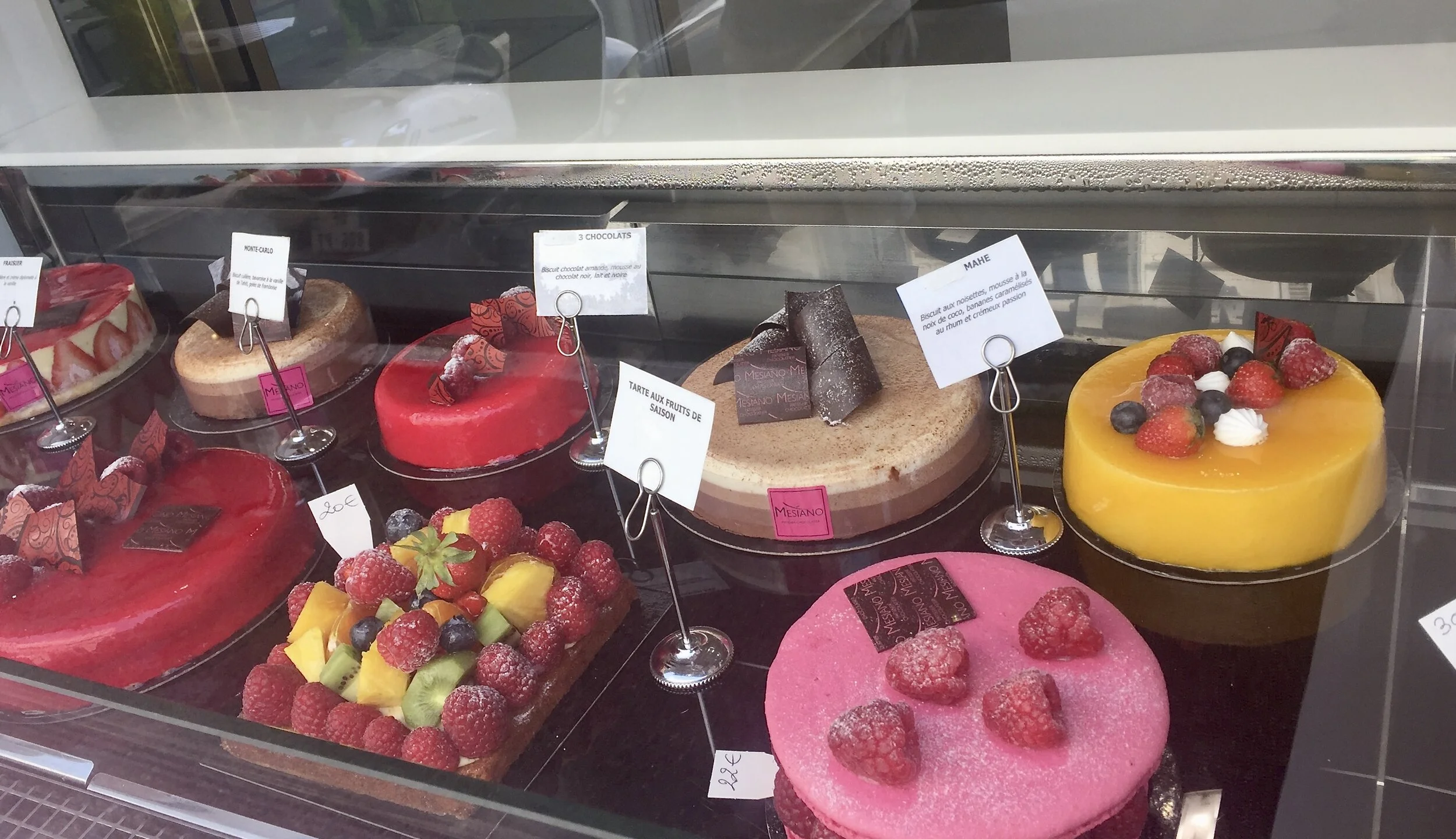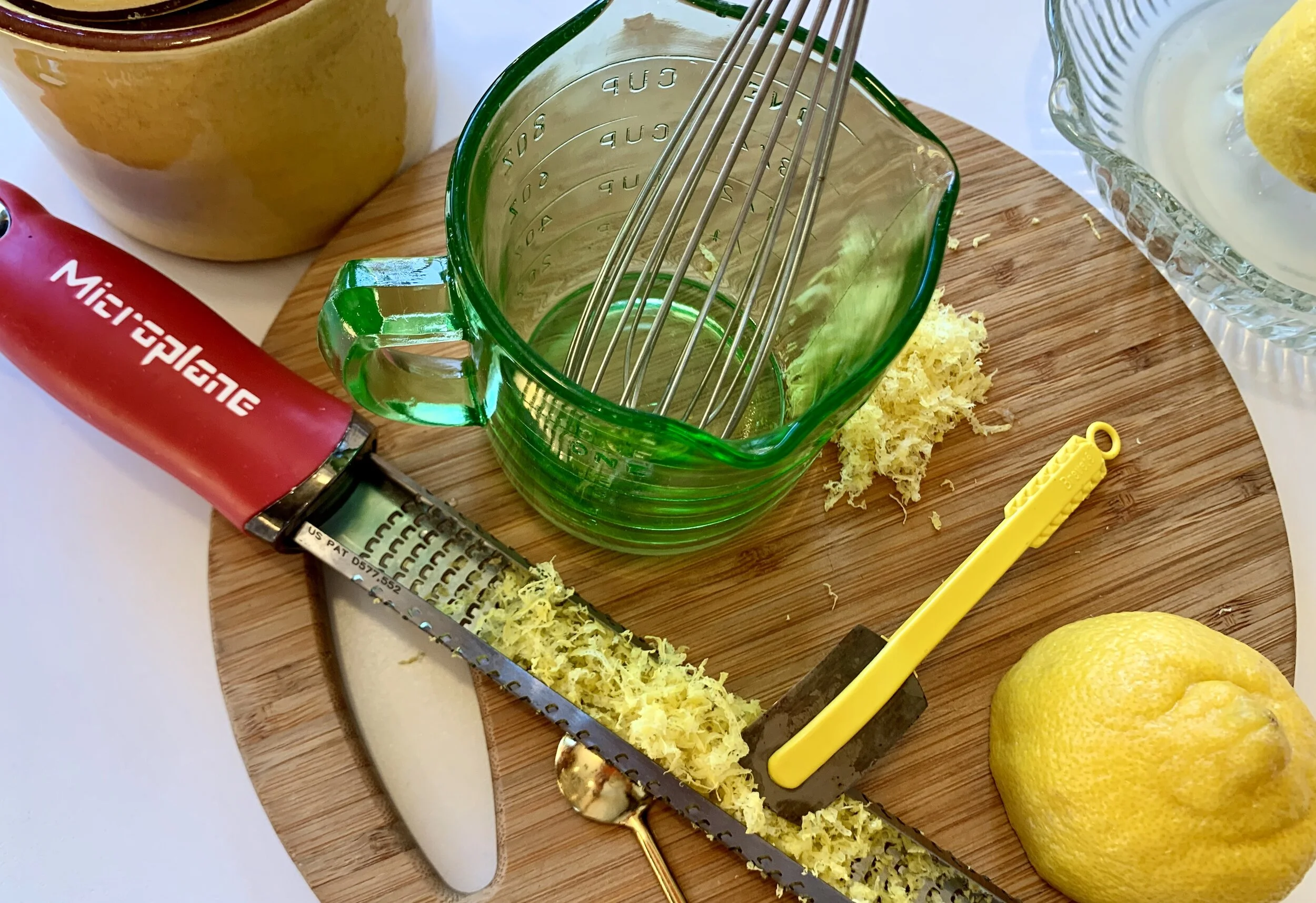Joe’s Lemon Tart: AKA Tarte au Citron
A month into our baking sessions, to encourage student engagement, I asked Piper and her father if they had any requests. While she must have been dreaming about triple layer chocolate cakes stuffed with gooey marshmallows and dripping with caramel, Joe jumped right in. “The lemon tart,” he said.
I had been afraid that his childhood favorite would come up sooner or later. Our family adored this classic pâtisserie: a shortbread crust filled with smooth, sour lemon curd. C’est tout! But I was skeptical that an eight-year-old learning over Zoom would be able to recreate a tart crust from scratch—rugelach was still months away. It had taken me about ten years of steady practice to get over my own dough anxiety. I didn’t want her to be scarred by failed attempts at pastrymaking like her granny. Not during a pandemic.
When I mused to Joe about the possibility of substituting a frozen supermarket product for the real tart crust, he didn’t skip a beat. “It’s cool. We’re not picky,” he said. Even when I explained that the taste and texture would never be the same, thereby reducing the contrast between crumbly crust and smooth filling, he didn’t blink. Clearly he was desperate for the recipe.
The decision to purchase pre-rolled Pillsbury Pie Dough did not come easy. Back in the day, my perfectionism never would have allowed such a manufactured product—the one that millions of Americans purchase all the time, and that I have happily eaten at many holiday tables—in our house. But let’s face it, unless you grew up on a farmhouse in Nebraska, your beloved granny probably wasn’t rolling out pie dough in her cozy kitchen for you to watch and pick up her tricks. It was time to bend the rules and let go of my haughty purist standards for ma petite fille. And her father.
Perfect French breakfast, a la Cote d’Azur 2018
His 1982 book Paul Bocuse In Your Kitchen became my guide to the true classics, it was much simpler than Julia Child’s version for the American audience. Undoubtedly Chef Paul would raise an eyebrow and spit out a merde in disgust, if he knew about my interpretation. Mais, désolé.
Old school tartes aux citron are still seen in most respectable Parisian pastry cases. On my last visit, I made a pilgrimage to the fourth arrondissement in Paris, near the Pompidou, to taste the famous tarte au citron at Pain de Sucre before heading home. My quest for the perfect lemon tart is to be continued post-Covid, j’espére.
Which brings me back to my first trip to France in the summer of 1971. It’s a food writer cliché, the awakening that occurs on an American’s first visit, but the pleasure is burned into my nervous system. A boyfriend and I criss-crossed the countryside from Paris to Provence, hitchhiking and taking trains, on no special timetable, staying in crumbling fleabag hotels, even renting a small apartment in Aix. We dined out at family-owned restaurants that we found by chance—à bon marché. Before Yelp, Eater or even the Internet, there were no top ten lists to tick off! When you made discoveries, you kept them to yourself.
Of course, there has always been bad food, even in France, and we must have had our share. But who remembers? It is those ripe peaches and apricots we ate as we drove through Provence, the grilled fish in Nice, the homemade confiture we sampled at each cafe, and the warm crackly croissants that were brought to our tiny hotel rooms on a tray each morning that I can’t forget. It was toujours pûr beurre—at least in memory.
As for the tart recipe I passed along to Piper that morning, it is simplicity itself. In fact, I was a little concerned that Piper might be disappointed in the visuals. No frosting! No sprinkles! No chocolate chips! Just a bright sunny yellow circle and a mouth full of rich, puckery lemon. Luckily she and her brother Finn have inherited the lemon gene, so disappointment was not on the menu. They dug into a homemade lemon tart for dessert that Sunday night, and everyone was happy for a moment.
RECIPE
JOE’S LEMON TART:
AKA TARTE AU CITRON
Mise en place
Pillsbury refrigerated pie dough or handmade Overachievers tart crust
2 cups uncooked raw beans, lentils, or rice for baking tart shell
Sunday mornings are for Zooming!
LEMON FILLING:
6 1/2 Tbsps soft butter, broken in pieces
2/3 cup sugar
3 eggs
4 Tbsps heavy cream, or crême fraiche
3 lemons, grated zest and juice
With prepared pie shell:
Preheat oven to 400F. Take a dough circle out of the refrigerator and let sit on counter for 15 minutes to warm.
On a counter, carefully unroll the dough circle. Place over a 9-inch round tart pan with removable bottom. Working by hand, press down the dough to line the bottom, and cover the fluted sides. With your index fingers, pinch dough on the side edges to crimp. Then run a rolling pan over the top to remove excess dough. Prick bottom about 5 times with a fork.
Cover the pan with a large sheet of parchment paper so it overhangs the sides. Fill the bottom with enough uncooked dried beans, lentils or rice to cover, spreading to evenly cover the pan.
Bake for 15 mins.
Remove the pan and lower the oven to 325F. When cool enough to touch, carefully remove paper with filling and pour beans or rice into a bowl for later use. (These can be stored in Tupperware for other projects.)
Lemon filling:
In a mixer fitted with paddle attachment, beat together butter and sugar till smooth. Beat in eggs and cream. Then stir in lemon juice and zest until it looks like a smooth soup. Don’t worry about curdly-looking bits. They disappear in baking.
Place the tart pan with crust on a baking sheet. Pour the lemon filling into the tart shell, leaving 1/4-inch crust at top.
Place in the oven and bake for 45 mins to 1 hour, until filling is set in the center and edges of crust are brown. Test by gently pressing the top in the center. If it wobbles, put it back for a few minutes. Cool on rack, in pan. Refrigerate about 3 hours before eating. Lemon tart tastes best cold, with a dollop of whipped cream or creme fraiche. Strawberries aren’t bad either. Store in refrigerator.
Tart Crust For Overachievers
In homage to Bocuse, for the purists, I’ve included his recipe for shortbread crust. It will yield something much closer to the French experience—a sweet crumbly crust that firmly cradles the filling and breaks like a cookie in the mouth. In Piper’s house, they devoured the tart in one night, never experiencing the soggy, weeping pastry crust that collapses the next day with the store bought kind.
1 ¾ cups flour
1 stick butter, softened
6 Tbsps sugar
1 egg, beaten
Place all the ingredients in a mixing bowl. With a pastry blender or your fingers, working quickly, pinch and blend the ingredients together until a ball of dough forms. Place on a lightly floured board, cover and let sit at room temperature for 1 hour.
When ready to bake, roll out to form a 10-inch circle and line the tart pan as above. Follow instructions above.








